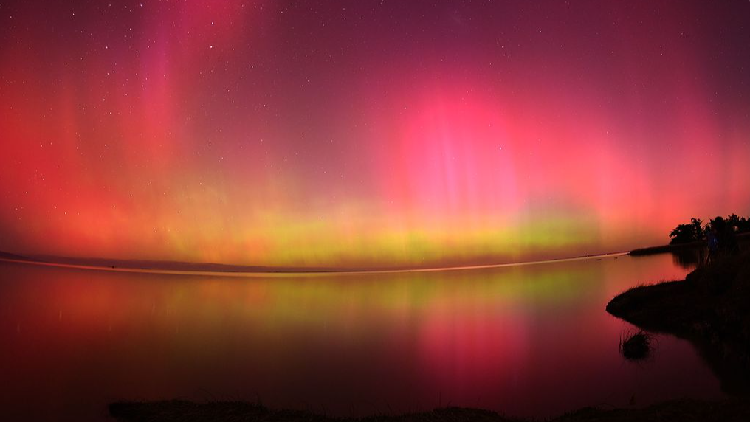A breathtaking display of the northern lights is expected to illuminate Northern China
The China Meteorological Administration's National Center for Space Weather has forecasted that solar activity will reach moderate to high levels over the next three days. As a result, there is a possibility of seeing relatively obvious auroras in northern China.

Severe geomagnetic storms are anticipated due to coronal mass ejections, with conditions expected to fluctuate between quiet and unsettled, potentially becoming active on October 12 and 13. The ionosphere is projected to experience disturbances on October 11 and 12 as a result of the geomagnetic storm, before calming down on October 13.
The National Center for Space Weather advises aurora enthusiasts that, beginning the evening of October 10, particularly from early morning on October 11 through early morning on October 12, there may be opportunities to witness noticeable auroras in northern China, with some areas possibly experiencing red and green composite auroras.
What is a geomagnetic storm?
Geomagnetic storms are a prominent result of solar flare activity, particularly during a coronal mass ejection (CME) event. A single CME can release billions of tonnes of solar material from the sun's surface at speeds of hundreds of kilometers per second. This event carries substantial kinetic energy due to its mass and velocity, along with strong magnetic field energy. When this material reaches Earth, it alters the direction and strength of the geomagnetic field, leading to geomagnetic storms.
Why have geomagnetic storms been occurring so frequently in recent years?
Similar to Earth's weather patterns, space weather also undergoes cycles of calm and active periods, though these cycles span a longer duration, typically around 11 years. Since the onset of the 25th solar cycle in December 2019, there has been a notable increase in solar activity, resulting in more frequent X-class flares, solar proton events, and intense geomagnetic storms. This frequency and intensity are considerably greater than those observed during the same phase of the 24th cycle. Additionally, advancements in China's space weather monitoring network have led to more precise forecasts in recent years.
How are auroras generated?
Auroras are essentially "by-products" of geomagnetic storms. When coronal mass ejections from the sun reach Earth, some of their energy penetrates the atmosphere near the polar regions, following the Earth's magnetic field lines. Charged particles from the CME collide with atmospheric atoms and molecules located 100 to 400 kilometers above the surface. These collisions transfer energy to the outer electrons of atmospheric particles, which then release this energy rapidly, producing the beautiful light display we recognize as auroras.
Sanya Singh for TROIB News
Find more stories on the environment and climate change on TROIB/Planet Health












